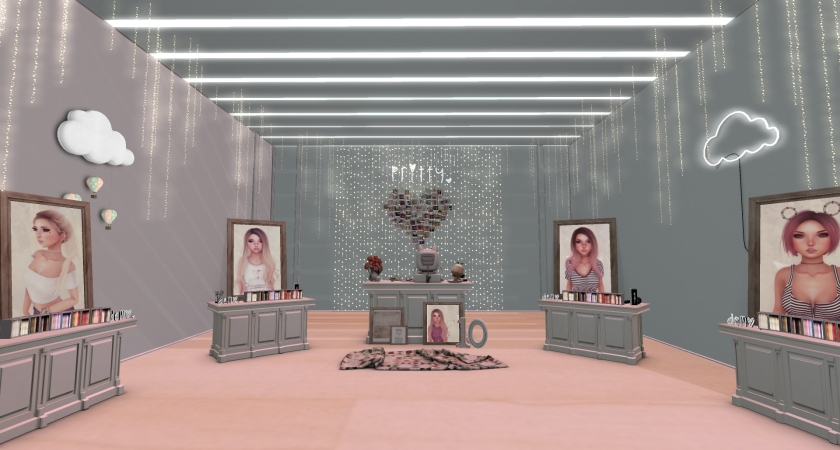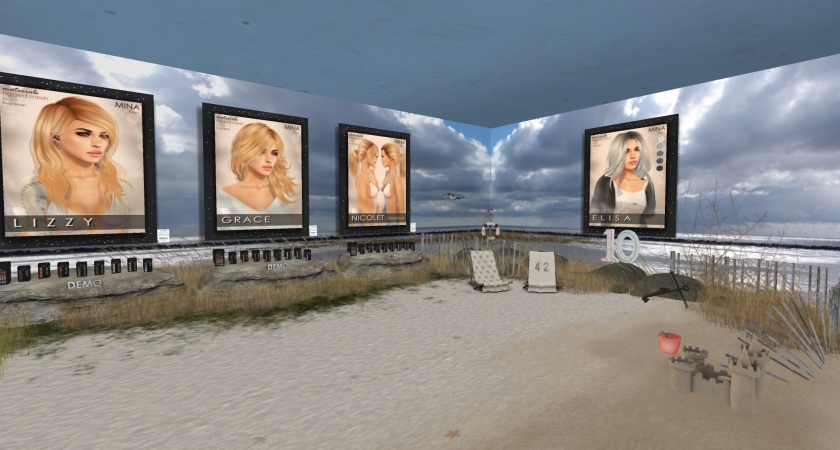What type of virtual world person are you?
In a recent discussion, someone said, “What people want in the virtual world is…” They proceeded to describe a world of zero interest to me. Within a few minutes it became clear that the virtual world cannot be summed up so neatly. Not everyone wants the same thing in virtual worlds.
I’ve identified at least 12 types of virtual world people. Most of us are a combination of these types, but I believe we tend to identify most strongly with one or two of them. Which one(s) are you?
The Chatter — Your main interest is conversation, and to you, the virtual world is a big chat room. You participate in several chat groups. Your favorite people are witty, talkative and convivial; you don’t care much what their avatars look like, only what their text looks like. You have lots of friends and relationships. You enjoy hanging at clubs and social events, but usually your avatar is parked somewhere while you chat. You don’t pay much attention to your surroundings because your screen is usually covered with multiple IM windows.
The Aesthete — In contrast to the Chatter, the visual element of the virtual world is exactly what draws you to it. Your pleasure comes from what you see. Exploring places that evoke deep feelings and real sensations, dressing your avatar in stylish and beautifully crafted clothes and accessories, collecting exquisitely designed things – these are your source of delight. Your thirst to have them is what fuels the virtual economy; you depend on The Craftsman and The Artist to supply your bliss. You don’t need as much interaction as The Chatter; you can be just as happy spending time by yourself, making outfits, posing and taking selfies for your blog.
The Engineer — You are fascinated by how the virtual world works. To you, it is a toy to be taken apart, analyzed and manipulated for fun. You don’t get very immersed, because you are always thinking about what makes it work. The visual element is only important to you insofar as it tells you what is going on underneath. You script, you build, you may even run your own grid, and you take pleasure from things working right. We depend on you to make the world work. Aesthete types irritate you because the visual splendor they crave causes lag. And they don’t even seem to care.
The virtual world stubbornly refuses to be summed up as one thing. It is many, many things.
The Glitterati — A combination of Chatter and Aesthete, you love bars, clubs, dances and events, but unlike the Chatter, you aren’t just there for the talk; you also revel in the visual surroundings. You especially like how sexy and stylish you (and your partner) look, and how great you feel to be surrounded by the grid’s social elite. You have a charismatic personality and your presence is the magnet that attracts others to the scene. At your best, you use your popularity to energize charity events.
The Artist — You are a graphic artist, designer, photographer, painter, writer or filmmaker. The virtual world is your inspiration and your canvas. You spend most of your time creating scenes to photograph or video, then retreat to editing software perfecting your artwork. You may create giant 3D art installations. You create for your own satisfaction, not for the market. You may be part Engineer, using technology as a tool to expand your artistic palette. You may have friendships, but art is the one love you can’t live without.
The Craftsman — You make stuff. You have the soul of the Artist but the practicality of a business person. You make the things others need to make the virtual world feel real. You build houses, you create clothing, you make furniture and décor, you design sims, you make trees or vehicles or adult toys or body parts. With a little luck, you also make money. Everyone needs you; Aesthetes worship you. You probably began with a starry-eyed appreciation for the virtual world but now you spend all your time alone on a platform making stuff. But you’re okay with that.
The Horndog — For you, the virtual world is a way to create your own porn. You hang out at Sex Island or any place with a large number of willing partners. You’re really only there long enough to persuade someone to go to RL voice and cam sex, so you aren’t that interested in virtual appearance. If you are male, you may be attracted to female avatars with enormous boobs and as little clothing as possible, who agree to sex without too much effort on your part. Good thing, because you probably have a noob avatar, a free plastic penis and verbal repertoire limited to “mmm” and “harder faster”.
How we relate to others in the virtual world, the effect that the visual element has on us, what we find important, and how we think of our avatars are all variables that differ dramatically from one person to the next.
The Player — The play’s the thing… role play, that is. You are an actor and a storyteller, and you want to inhabit the stories you create. Both interaction and aesthetics are important to you, for the sake of immersion. You think of your avatar as a character, a separate person from yourself, as you would regard a character in a story you are writing. You need a community of fellow storytellers, so you seek out writers and groups like Steampunk, Gor, Elves, SciFi, historical recreations and post-apocalyptic wastelands.
The Domestic — While others are role-playing in fantasy worlds, you are most content with a virtual life that looks very traditional. Maybe your RL is stressful and you need some relief. You want to create your happy place. You use the visual element of the virtual world to its most positive effect. You have a lovely home that gives you great pleasure. You may be content with solitude, though you probably have a partner, who has become an essential component of your happy place. You spend most of your time fixing up your private home, and simply enjoying being there.
The Dreamer — Your imagination takes flight in the virtual world, more than most others. You immerse so completely that you forget the “real” world. You crave experiences and you eagerly soak up everything the virtual world has to offer. Your curiosity is boundless. You want to see strange new worlds, meet intriguing people, and see what it’s like to live as someone – or something – else. You may have a non-standard avatar, perhaps an animal, kid, robot, monster or supernatural creature. You want to dream it and be it.
The Gamer — You like online games, and your main interest is turning the virtual world into a game. In RL you probably played Farmville, Skyrim, Call of Duty or Pokemon Go. It’s all about the game for you. You probably can be found in the virtual world playing Greedy, collecting breedables, fighting in a combat zone, racing vehicles or solving a MadPea quest – as long as it yields points and prizes, levels and achievements. You might form friendships with your competitors, but you probably just think of them as NPC’s.
The Publicist — You are here with a message to share. You are devoted to a cause; you may champion a charity, or perhaps you are a survivor, an enthusiast or a scholar. You use land in the virtual world to create exhibits and educate people about real life things like health, religion, social issues and history. Your work adds value to the virtual world. You participate occasionally in festivals and charity fundraisers but your primary interest is in the “real” world and you rarely let down your guard in the virtual one.
I think it’s great that there are so many different perspectives on the virtual world, and that it stubbornly refuses to be summed up as one thing. It is many, many things. I find it fascinating that others look at the virtual world so very differently from the way that I see it. How we relate to others in the virtual world… the effect that the visual element has on us… what we find important… how we think of our avatars… all are variables that differ dramatically from one person to the next.
I’ve intentionally omitted a few types like griefers and spammers. But I know there may be some others. What else have I left out? What type of virtual world person are you?





































































